Thinking outside the Monkey Box
Avoiding crowd proves painful for several FLW Tour heavy hitters at Okeechobee opener
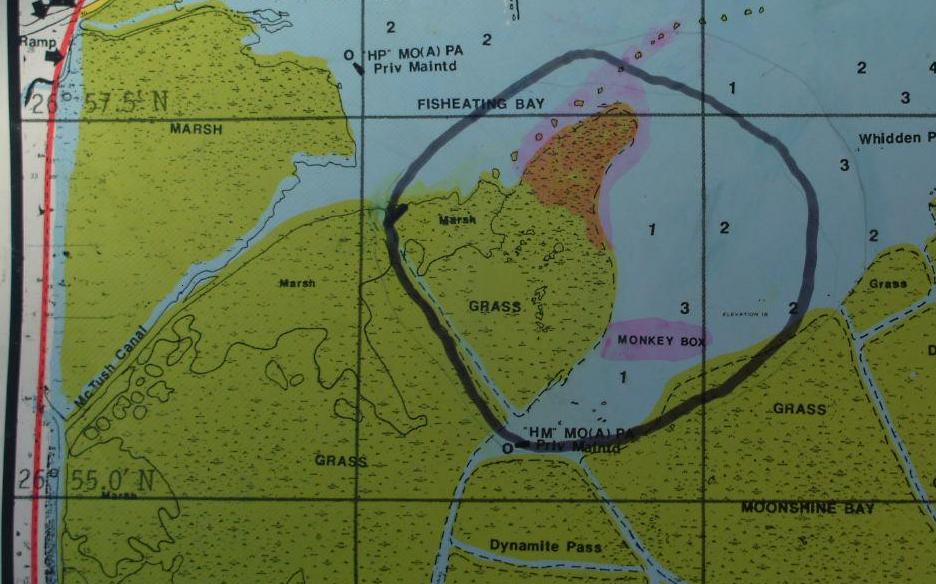
When the Wal-Mart FLW Tour pulls into Clewiston, Fla., every year to kick off a new season, Lake Okeechobee always fishes a little differently from previous years.
Last year, Okeechobee fished huge – clear water and bass could be found all around the lake. This year, the Big O became the Tiny O as clear water and productive fishing areas were scarce.
The big lake fished so small last week that some pros purposely avoided the one area they felt certain would deliver victory: the Monkey Box.
As crazy as it sounds, there is some solid reasoning behind such a contradictory strategy.
For starters, pros know all too well that intense fishing pressure can divide and dilute an area’s tournament-winning potential.
Secondly, fishing in a tight crowd means seeing other competitors fish. Watching other pros fill their livewells while not getting a bite can be detrimental to one’s confidence.
Finally, every pro’s biggest dream is to go against the grain and win a tournament in an area deemed fishless by locals and other pros.
Avoiding the crowd is a tournament strategy that can pay big dividends on many tournament lakes across the country, but Lake Okeechobee is not one of them – and that was especially true this year.
A few that tried to steer clear of the crowd and think outside the Monkey Box found themselves in trouble.
Why the Monkey Box?
The Monkey Box, located on the west side of the lake, has always been one of the better fishing areas on Okeechobee.
The area features hard bottom, plenty of vegetation and clear water, making it a magnet for spawning bass in the spring.
But what made the Monkey Box particularly attractive to anglers this year was its precious clear water – a must for catching bass on Okeechobee.
When cold winter winds lashed Okeechobee in December, the lake water turned the color of beef broth. Since much of the lake’s vegetative barrier was ripped out by hurricanes last summer, the colored water moved in and eliminated a lot of Okeechobee’s better fishing areas.
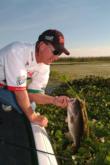 “Traditionally, the whole North Shore area, anywhere from the Monkey Box up through Fisheating Bay and all the way over to Buckhead Ridge has had clear water and great fishing,” Castrol pro Mike Surman of Boca Raton, Fla., said. “But this year the Monkey Box was the only area that remained clear up there, mainly because it’s protected by large mats of hydrilla which help filter the water.
“Traditionally, the whole North Shore area, anywhere from the Monkey Box up through Fisheating Bay and all the way over to Buckhead Ridge has had clear water and great fishing,” Castrol pro Mike Surman of Boca Raton, Fla., said. “But this year the Monkey Box was the only area that remained clear up there, mainly because it’s protected by large mats of hydrilla which help filter the water.
“Specifically, the hottest spot has been where the point of the Monkey Box meets the main lake. It’s a small area, and it has been the only consistent big-fish-producing area on the lake since December – the EverStart proved that – and everybody knew it going into the FLW.”
Becoming a monkey’s uncle
During the FLW Tour event, the tip of the Monkey Box turned into a game of monkeyshines.
Boats weaved around one another; hundreds of trolling motors sliced hydrilla mats into a maze; and anglers kept constant watch on each other as they dunked tungsten-laden plastics through the mats.
It was a scene that drove some pros bananas, but if you avoided the monkey madness, you ran the risk of becoming a monkey’s uncle.
2003 Bassmaster Classic winner Mike Iaconelli of Runnemede, N.J., was one of the pros that tried to make something else work on Okeechobee, and his efforts left him in a dismal 190th place with a two-day total of 4 pounds.
“I went to Okeechobee with the intention of avoiding the Monkey Box,” Iaconelli said. “That’s where the EverStart was won and I knew it would be a mob scene. My style of fishing is to get away from the crowd and that’s what I tried to do.”
Iaconelli did find some other decent areas, including South Bay and Tin House Cove, but strong winds pushed muddy water into his areas and dashed his hopes of outsmarting the Monkey Box
“Last week’s experience taught me this: Getting away from the crowd is a great strategy everywhere else in the country except in Florida,” he laughed. “Because of the way fish get in such big schools during the prespawn in Florida, it’s almost the opposite situation: You want to fish among the boats, not avoid them.
2003 FLW Tour Angler of the Year Dan Morehead of Paducah, Ky., also tried to avoid the crowd to no avail. He finished 187th with 4 pounds, 11 ounces.
“I tried to go in there the first day, but I just couldn’t do it,” Morehead said of the Monkey Box. “I’ve never won a tournament fishing in a crowd, and I’d rather take a whipping than fish like that.
“On almost any other lake in the country, you can fish somewhere by yourself and still catch a few fish – even if they’re not the winning fish. But here, you are either around fish, or you’re not around jack; it’s totally feast or famine.”
While trying to think outside the Monkey Box, two-time FLW Tour Angler of the Year Clark Wendlandt of Cedar Park, Texas, did the unthinkable: He zeroed on the first day of competition.
Wendlandt did managed to recover somewhat on day two with an 11-pound, 3-ounce limit, leaving him in 124th place.
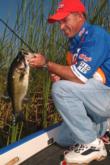 “When I heard that the EverStart was won in the Monkey Box, I immediately scratched it off my list of places to fish during the FLW,” the Kellogg’s pro said. “I had planned to fish in South Bay, but I figured the wind had really destroyed it. So the first day I tried to fish in some places up north where I would be by myself, and it didn’t work.”
“When I heard that the EverStart was won in the Monkey Box, I immediately scratched it off my list of places to fish during the FLW,” the Kellogg’s pro said. “I had planned to fish in South Bay, but I figured the wind had really destroyed it. So the first day I tried to fish in some places up north where I would be by myself, and it didn’t work.”
On day two, Wendlandt moved closer to the Monkey Box, but still stayed on the periphery of the crowd.
“Getting near the crowd put me around a few more fish, but the big fish were no doubt out on the end where everybody was fishing,” he said. “Avoiding popular fishing areas is a strategy that usually works for me, but the way this tournament played out, if you weren’t near a crowd, more than likely, you weren’t catching fish.”
Grabbing the monkey by the tail
As predicted, the tournament was won in the Monkey Box.
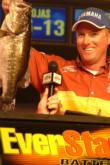 Kelly Jordon of Mineola, Texas, flipped matted hydrilla at the tip of the Monkey Box all four days to win the event.
Kelly Jordon of Mineola, Texas, flipped matted hydrilla at the tip of the Monkey Box all four days to win the event.
“I normally don’t like to fish in crowd, either,” Jordon said. “But it was the only place I had any good bites in practice.”
After practicing all over Okeechobee with little success, Jordon pulled into the Monkey Box late Tuesday afternoon and got several big bites in a row.
“After getting those heavy bites that afternoon, I just had to go back Wednesday morning and jack them,” Jordon said. “I went in there Wednesday morning and caught a 7-pounder right off the bat – crowd or no crowd, I wasn’t leaving.”
In addition to Jordon’s win, second place through fourth place also came from the same general area at that end of the Monkey Box.
“Is anyone surprised?” quipped Surman, who finished 52nd in the event. “I fished out of the crowd on the Fisheating Bay side of the Monkey Box. There were some fish in there, but very few big ones.”
So what was the highest finish that did not come out the Monkey Box?
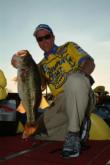 Terry Bolton of Paducah, Ky., finished fifth by fishing spinnerbaits and lipless rattling crankbaits in a tiny stretch of clear water in South Bay.
Terry Bolton of Paducah, Ky., finished fifth by fishing spinnerbaits and lipless rattling crankbaits in a tiny stretch of clear water in South Bay.
“I fished scattered hydrilla on the outside of small eelgrass bed,” Bolton said. “I was mostly slow-rolling a spinnerbait to catch fish that were staging in the hydrilla.”
Also, Pedigree pro Greg Pugh of Cullman, Ala., finished sixth by fishing spinnerbaits and rattling lipless crankbaits in an area near Whidden Pass on Observation Shoal.
But he was not alone either. Pugh shared the 10-acre patch of clear water with 13 other boats during the first two days of competition.
It’s hard to believe that, given the sheer size of Lake Okeechobee, many had to fish in an area the size of a farm pond to catch bass.
Fortunately, Lake Okeechobee is a very dynamic water body that is in a constant state of change, and chances are good that if the Wal-Mart FLW Tour returns to the Big O next year, it will once again be a completely different place.
And maybe then there will be a lot less monkey business.